50 Luminaries and Milestones
Sub Navigation
Sub Navigation
50 Luminaries and Milestones for 50 Years of Medicine
1. Birth of a Medical School
 In March 1972, the Brown Corporation authorizes the establishment of a full four-year Doctor of Medicine degree program in the Division of Biology and Medicine, and the University begins planning for a full-scale medical curriculum. Pierre Galletti is appointed vice president and chief operating officer for the division, a position he will hold until 1991.
In March 1972, the Brown Corporation authorizes the establishment of a full four-year Doctor of Medicine degree program in the Division of Biology and Medicine, and the University begins planning for a full-scale medical curriculum. Pierre Galletti is appointed vice president and chief operating officer for the division, a position he will hold until 1991.
2. Affiliation with the VA
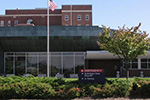 The Veterans Administration Medical Center becomes affiliated with the medical education program at Brown. Dr. Harry Harrower, chief of surgery, oversees teaching of students and residents in surgery at the VAMC.
The Veterans Administration Medical Center becomes affiliated with the medical education program at Brown. Dr. Harry Harrower, chief of surgery, oversees teaching of students and residents in surgery at the VAMC.
3. Elizabeth LeDuc, PhD
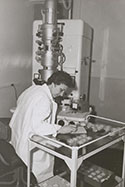 The first female full professor to hold an academic position at Brown, Dr. LeDuc was named Dean of the Division of Biological and Medical Sciences in 1973. She was appointed to the President’s Committee on Science and Technology by Gerald Ford. In addition to her teaching and administrative roles, Dr. LeDuc maintained an active laboratory studying the cell biology of the liver.
The first female full professor to hold an academic position at Brown, Dr. LeDuc was named Dean of the Division of Biological and Medical Sciences in 1973. She was appointed to the President’s Committee on Science and Technology by Gerald Ford. In addition to her teaching and administrative roles, Dr. LeDuc maintained an active laboratory studying the cell biology of the liver.
4. Charles McDonald, MD
 The founding chair of Brown’s Department of Dermatology, Dr. McDonald was a pioneer in translational research who lectured throughout the world on the use of cancer drugs in non-cancerous systemic illnesses and skin diseases. He became the national president of the American Cancer Society in 1998, the only dermatologist ever to have held that post. During his tenure he led new efforts to improve diversity within the organization, coalesced program efforts in childhood cancer, and spearheaded program initiatives in prostate cancer in African American men.
The founding chair of Brown’s Department of Dermatology, Dr. McDonald was a pioneer in translational research who lectured throughout the world on the use of cancer drugs in non-cancerous systemic illnesses and skin diseases. He became the national president of the American Cancer Society in 1998, the only dermatologist ever to have held that post. During his tenure he led new efforts to improve diversity within the organization, coalesced program efforts in childhood cancer, and spearheaded program initiatives in prostate cancer in African American men.
5. Roy Hudson, PhD
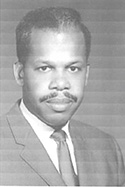 The first African American tenured faculty member at Brown, Dr. Hudson taught neuroscience in the Division of Biology and Medicine. Dr. Hudson says that in the early days of the Division, he and other faculty who were designing the Program in Medicine set out to “intimately link basic science with clinical medicine,” something that was not the norm at the time. Dr. Hudson was the first African American to earn a PhD from the Pharmacology department at the University of Michigan. He went on to become president of Hampton University in Hampton, VA, and was interim president of Livingstone College in Salisbury, NC. In 1989, Dr. Hudson was named the King/Chavez/Parks Visiting Professor at the University of Michigan.
The first African American tenured faculty member at Brown, Dr. Hudson taught neuroscience in the Division of Biology and Medicine. Dr. Hudson says that in the early days of the Division, he and other faculty who were designing the Program in Medicine set out to “intimately link basic science with clinical medicine,” something that was not the norm at the time. Dr. Hudson was the first African American to earn a PhD from the Pharmacology department at the University of Michigan. He went on to become president of Hampton University in Hampton, VA, and was interim president of Livingstone College in Salisbury, NC. In 1989, Dr. Hudson was named the King/Chavez/Parks Visiting Professor at the University of Michigan.
50 Years of Medicine at Brown
As you browse through our luminaries and milestones, take a moment to join us in celebrating the 50 years of impact in medical education and research, the contributions of alumni and faculty in Rhode Island and around the world, and the promising future ahead for The Warren Alpert Medical School of Brown University.
6. Rhode Island's First Kidney Transplant
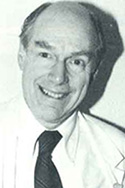 In 1973, Dr. Robert W. Hopkins performs the first kidney transplantation in Rhode Island. The patient is a high school student from Central Falls. A Harvard-trained vascular surgeon at The Miriam Hospital, Dr. Hopkins' decision to come to Rhode Island was influenced by the presence of the medical school at Brown.
In 1973, Dr. Robert W. Hopkins performs the first kidney transplantation in Rhode Island. The patient is a high school student from Central Falls. A Harvard-trained vascular surgeon at The Miriam Hospital, Dr. Hopkins' decision to come to Rhode Island was influenced by the presence of the medical school at Brown.
7. John "Jack" Cunningham, MD
 A native Rhode Islander, Dr. Cunningham was an esteemed family physician based in Pawtucket who helped establish the family medicine residency program at Memorial Hospital. On the 30th anniversary of the family medicine program in 2006, he is remembered as “the closest thing to a ‘patron saint’ that we have in Rhode Island family medicine and his spirit of healing continues among those he taught and inspired.”
A native Rhode Islander, Dr. Cunningham was an esteemed family physician based in Pawtucket who helped establish the family medicine residency program at Memorial Hospital. On the 30th anniversary of the family medicine program in 2006, he is remembered as “the closest thing to a ‘patron saint’ that we have in Rhode Island family medicine and his spirit of healing continues among those he taught and inspired.”
8. Mary Arnold, MD
Dr. Arnold joined the faculty of the Brown University Program in Medicine in 1966. She was the director of pediatric endocrinology at Rhode Island Hospital and chair of the Department of Pediatrics at Roger Williams Medical Center. Her greatest impact on academic medicine was her energetic teaching in the Integrated Medical Sciences at Brown and her mentorship of young faculty. Her generous spirit combined with her clinical experience, meticulous approach to patient history, and excellent diagnostic skills were a model for young clinicians.
9. Paul Calabresi, MD
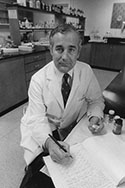 Dr. Paul Calabresi joined the Brown faculty as professor of medicine in 1968, where he continued the pioneering oncology research he had been pursuing since the 1950s. He made major advances in understanding the way the body processes chemotherapy and was a visionary proponent of combining chemotherapeutic agents as well as of combining therapies – surgery, radiation, and chemotherapy – to optimize safety and effectiveness. He became Brown’s first chairman of medicine in 1974.
Dr. Paul Calabresi joined the Brown faculty as professor of medicine in 1968, where he continued the pioneering oncology research he had been pursuing since the 1950s. He made major advances in understanding the way the body processes chemotherapy and was a visionary proponent of combining chemotherapeutic agents as well as of combining therapies – surgery, radiation, and chemotherapy – to optimize safety and effectiveness. He became Brown’s first chairman of medicine in 1974.
10. Levi Adams
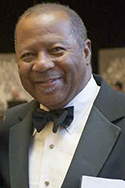 Vice President for Biology and Medicine External Affairs Levi Adams was instrumental in garnering support for a medical school at Brown from Rhode Island legislators and establishing the first $20 million ($135 million in 2022 dollars) fundraising campaign in the early 1970s to support medical education. He was also instrumental in establishing the Early Identification Program with Tougaloo College and the establishment of the Office of Diversity and Multicultural Affairs in 1981. Alumni whose lives and careers had been impacted by Adams created the Levi C. Adams Medical Scholarship to support African American students at The Warren Alpert Medical School.
Vice President for Biology and Medicine External Affairs Levi Adams was instrumental in garnering support for a medical school at Brown from Rhode Island legislators and establishing the first $20 million ($135 million in 2022 dollars) fundraising campaign in the early 1970s to support medical education. He was also instrumental in establishing the Early Identification Program with Tougaloo College and the establishment of the Office of Diversity and Multicultural Affairs in 1981. Alumni whose lives and careers had been impacted by Adams created the Levi C. Adams Medical Scholarship to support African American students at The Warren Alpert Medical School.
11. Robert Smith, MD
Few physicians have had such significant impact on both Brown and the entire country. To Brown, Dr. Smith is one of the architects of the Early Identification Program with Tougaloo College. To the nation, the Mississippi physician was a stalwart in the Civil Rights Movement, providing treatment to protesters who were beaten during demonstrations, and even standing up to the American Medical Association when they would not allow African American physicians to attend its annual meeting. Dr. Smith went on to design the community health centers that became a model for the nationwide network of federal clinics that provide health care services to underserved populations.
12. Pierre Galletti, MD, PhD
.jpg) Pierre Galletti, who joined Brown as professor of medical science in 1967, is appointed chair of the newly formed Division of Biology and Medicine. He wrote the first comprehensive book on the principles and techniques of heart-lung bypass, the standard work in the field. At the research institute of Cedars of Lebanon Hospital in Los Angeles, he ran one of the nation’s first programs in hemodialysis and cardiopulmonary bypass for cardiac surgery. During his career at Brown, he will not only assist at the birth of the medical school and shepherd it through its first two decades, but he will continue to break new ground in research in physiology and biophysics and help establish Brown as a center for biomedical engineering and translational research.
Pierre Galletti, who joined Brown as professor of medical science in 1967, is appointed chair of the newly formed Division of Biology and Medicine. He wrote the first comprehensive book on the principles and techniques of heart-lung bypass, the standard work in the field. At the research institute of Cedars of Lebanon Hospital in Los Angeles, he ran one of the nation’s first programs in hemodialysis and cardiopulmonary bypass for cardiac surgery. During his career at Brown, he will not only assist at the birth of the medical school and shepherd it through its first two decades, but he will continue to break new ground in research in physiology and biophysics and help establish Brown as a center for biomedical engineering and translational research.
13. Milton Hamolsky, MD
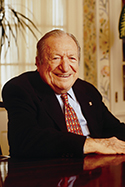 Endocrinologist Milton W. Hamolsky, a graduate of Harvard Medical School who left positions at Harvard and Beth Israel Hospital to join the Rhode Island Hospital staff, becomes the first full-time chief of medicine. Dr. Hamolsky developed the T-3 resin uptake test, which detects the presence of hyperthyroidism or hypothyroidism by measuring the amount of T-3 (the hormone triiodothyronine) that binds to globulins in a serum sample. The T-3 or Hamolsky Test provides a more accurate indicator of thyroid disease than simply measuring the amount of thyrosine in the blood.
Endocrinologist Milton W. Hamolsky, a graduate of Harvard Medical School who left positions at Harvard and Beth Israel Hospital to join the Rhode Island Hospital staff, becomes the first full-time chief of medicine. Dr. Hamolsky developed the T-3 resin uptake test, which detects the presence of hyperthyroidism or hypothyroidism by measuring the amount of T-3 (the hormone triiodothyronine) that binds to globulins in a serum sample. The T-3 or Hamolsky Test provides a more accurate indicator of thyroid disease than simply measuring the amount of thyrosine in the blood.
14. Henry Randall, MD
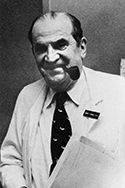 Henry T. Randall, whose research has made crucial contributions to the understanding of surgical physiology and metabolism, fluid and electrolyte balance, joins the Brown faculty as professor of medical science. Dr. Randall left his positions as clinical director and chair of surgery at the Memorial Center for Cancer and Allied Diseases in New York and vice president at the Sloan-Kettering Institute, as well as a professorship at Cornell, to take on his new role at Brown and to head the Division of Surgical Research at Rhode Island Hospital.
Henry T. Randall, whose research has made crucial contributions to the understanding of surgical physiology and metabolism, fluid and electrolyte balance, joins the Brown faculty as professor of medical science. Dr. Randall left his positions as clinical director and chair of surgery at the Memorial Center for Cancer and Allied Diseases in New York and vice president at the Sloan-Kettering Institute, as well as a professorship at Cornell, to take on his new role at Brown and to head the Division of Surgical Research at Rhode Island Hospital.
15. Physician’s Oath
June 1975
A committee from the MD Class of 1975 drafted a contemporary revision of the Hippocratic Oath to take upon receiving their degree. Graduates of the medical school take the same oath to this day:
Now being admitted to the high calling of the physician, I solemnly pledge to dedicate my life to the care of the sick, the promotion of health and the service of humanity. In the spirit of those who have inspired and taught me, I will seek constantly to grow in knowledge, understanding and skill and will work with my colleagues to promote all that is worthy in the ancient and honorable profession of medicine. The health and dignity of my patient will ever be my first concern. I will hold in confidence all that my patient relates to me. I will not permit considerations of race, gender, sexual preference, religion, nationality, or social standing to come between me and my duty to anyone in need of my services. This pledge I make freely and upon my honor.
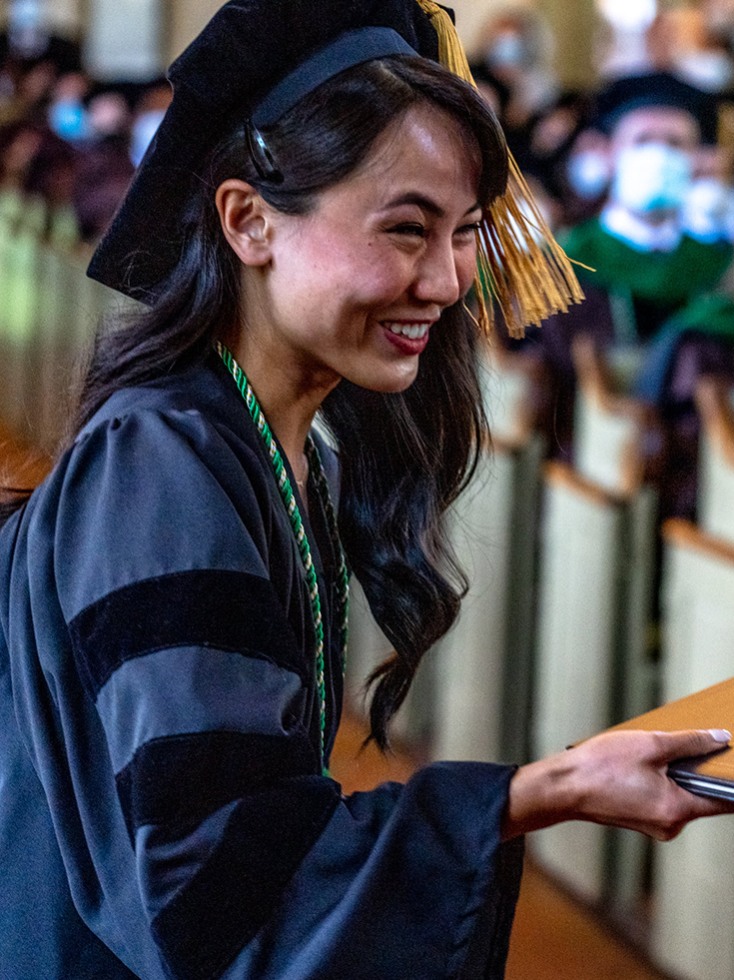
16. Arthur Horwich MD’75
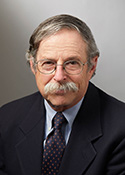 A member of the first graduating class, Dr. Horwich and colleagues were the first to describe chaperonins, molecules that assist proteins that cannot fold on their own. Without such chaperones, proteins can stick to each other, leading to progressive brain diseases like Parkinson's, Alzheimer's and Huntington's. If drugs that activate the chaperone system can be developed, they can be used to slow or prevent such diseases. Dr. Horwich is a Howard Hughes Medical Institute at Yale School of Medicine and has won a number of prestigious awards for his work, including the Lasker.
A member of the first graduating class, Dr. Horwich and colleagues were the first to describe chaperonins, molecules that assist proteins that cannot fold on their own. Without such chaperones, proteins can stick to each other, leading to progressive brain diseases like Parkinson's, Alzheimer's and Huntington's. If drugs that activate the chaperone system can be developed, they can be used to slow or prevent such diseases. Dr. Horwich is a Howard Hughes Medical Institute at Yale School of Medicine and has won a number of prestigious awards for his work, including the Lasker.
17. Brown-Tougaloo Early Identification Program
In 1976, Dean Stanley Aronson and Professor Richard McGinnis of Tougaloo College initiate an Early Identification Program to provide a pathway for outstanding college students to pursue their medical studies at Brown. The EIP is an outgrowth of a student exchange program created in 1964, at the height of the Civil Rights movement, between Brown and Tougaloo College, the only historically black college in Mississippi that was not controlled at the time by the state government. The Brown-Tougaloo EIP is going strong to this day, with two students from Tougaloo enrolling in the Medical School every year.
RELATED: Brown-Tougaloo Partnership
The Brown-Tougaloo Partnership consists of various programs that engage the culture, academics, and histories of these two distinctive institutions.
18-21. Notable Alumni
Janice Allen ’73 MD’76
Dr. Allen was the first African American to graduate from the Program in Medicine. She went on to residency at Pennsylvania Hospital and the University of Pennsylvania. Today she is an internist in Uniontown, PA.
Griffin Rodgers ’76 MMSc’79 MD’79
As the director of the National Institute of Diabetes and Digestive and Kidney Diseases (NIDDK) since 2007, Dr. Rodgers provides scientific leadership and manages a staff of more than 630 employees and a budget of over $2.25 billion. As a research investigator, he is widely recognized for his contributions to the development of hydroxyurea, the first effective—and now FDA approved—therapy for sickle cell anemia.
Seth F. Berkley ’78 MD’81
Dr. Berkley joined Gavi, the Vaccine Alliance, as CEO in 2011. During his tenure, Gavi has expanded access to new vaccines and increased coverage of routine immunization in lower-income countries, preventing some 15 million deaths. During the COVID-19 pandemic, he co-established COVAX, enabling developing country distribution of more than 1 billion COVID-19 vaccine doses. Dr. Berkley has been featured on the cover of Newsweek and recognized by TIME as one of the world’s most influential people. He was elected to the National Academy of Medicine on October 17, 2022.
Lloyd Minor ’79 MD’82, P’17
Dr. Minor is a scientist, surgeon, and the Carl and Elizabeth Naumann Dean of the Stanford University School of Medicine, a position he has held since December 2012. An otolaryngologist, Dr. Minor is an expert in balance and inner ear disorders perhaps best known for discovering superior canal dehiscence syndrome, a debilitating disorder characterized by sound- or pressure-induced dizziness. He subsequently developed a surgical procedure that corrects the problem and alleviates symptoms.
22. Program in Liberal Medical Education
In 1984, the Brown Corporation approved the Program in Liberal Medical Education, an eight-year continuum, incorporating four years of liberal arts undergraduate work and four years of professional training into a single course of study. The PLME continues to thrive today, based on its founding goals to open new possibilities in curriculum planning and achieve a new level of integration between undergraduate education and intensive medical studies – goals facilitated by the seamless nature of the experience for students who enter the program directly from high school.
RELATED: Program in Liberal Medical Education
An innovative program that combines undergraduate education and professional studies in medicine in a single eight-year program.
23. Sidney Katz, MD
.jpg) Dr. Katz was an associate dean of medicine at Brown and a pioneering physician, scientist, and educator, who developed the Index of Independence of Activities for Daily Living (ADLs). In 1986, he founded the Center for Gerontology and Health Care Research at Brown. An early advocate of the importance of measuring quality of life in the elderly population, Dr. Katz’s ideas were the catalyst for development of the federally-mandated nursing home Resident Assessment Instrument (RAI).
Dr. Katz was an associate dean of medicine at Brown and a pioneering physician, scientist, and educator, who developed the Index of Independence of Activities for Daily Living (ADLs). In 1986, he founded the Center for Gerontology and Health Care Research at Brown. An early advocate of the importance of measuring quality of life in the elderly population, Dr. Katz’s ideas were the catalyst for development of the federally-mandated nursing home Resident Assessment Instrument (RAI).
24. Pawtucket Heart Health Study
 This 17-year, community-based project to modify risk factors for cardiovascular disease among residents of Pawtucket, RI, began in 1982. Directed by faculty in the Medical School’s Department of Community Health, the program used strategies that rely on community volunteers to develop a framework to support health enhancement programs to reduce cardiovascular morbidity and mortality. The study was groundbreaking in developing innovative approaches to improving population health.
This 17-year, community-based project to modify risk factors for cardiovascular disease among residents of Pawtucket, RI, began in 1982. Directed by faculty in the Medical School’s Department of Community Health, the program used strategies that rely on community volunteers to develop a framework to support health enhancement programs to reduce cardiovascular morbidity and mortality. The study was groundbreaking in developing innovative approaches to improving population health.
25. Charles Carpenter, MD
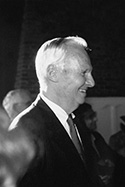 By the time he arrived at Providence in 1986, Dr. Carpenter was already a luminary in infectious disease, having defined a formula for treating diarrhea-related dehydration in resource-poor settings. He contributed to the world’s understanding of HIV infection, outlining the course of the disease in women and helping to develop anti-retroviral therapies. In Rhode Island, he championed the HIV testing and treatment of individuals in prison, establishing a longstanding commitment among Brown faculty to provide high-quality health care in the state’s prison system.
By the time he arrived at Providence in 1986, Dr. Carpenter was already a luminary in infectious disease, having defined a formula for treating diarrhea-related dehydration in resource-poor settings. He contributed to the world’s understanding of HIV infection, outlining the course of the disease in women and helping to develop anti-retroviral therapies. In Rhode Island, he championed the HIV testing and treatment of individuals in prison, establishing a longstanding commitment among Brown faculty to provide high-quality health care in the state’s prison system.
26. Erica Schwartz ’94 MD’98
 Dr. Schwartz is a retired U.S. Public Health Service Commissioned Corps rear admiral who served as the deputy surgeon general of the United States from January 2019 to April 2021. As a Commissioned Corps officer, she served with the U.S. Coast Guard as their Chief of Health Services and Chief of Preventive Medicine at the U.S. Coast Guard headquarters and became its principal expert on flu pandemics. Prior to becoming Deputy Surgeon General, she served as the Coast Guard's Chief Medical Officer from 2015 to 2019. She retired in April 2021 after over 27 years of combined uniformed service.
Dr. Schwartz is a retired U.S. Public Health Service Commissioned Corps rear admiral who served as the deputy surgeon general of the United States from January 2019 to April 2021. As a Commissioned Corps officer, she served with the U.S. Coast Guard as their Chief of Health Services and Chief of Preventive Medicine at the U.S. Coast Guard headquarters and became its principal expert on flu pandemics. Prior to becoming Deputy Surgeon General, she served as the Coast Guard's Chief Medical Officer from 2015 to 2019. She retired in April 2021 after over 27 years of combined uniformed service.
27. Susan Cu-Uvin, MD and HIV care
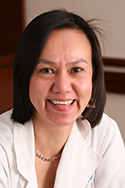 Dr. Cu-Uvin is the director of the Brown Global Health Initiative and the Providence/Boston Center for AIDS Research. She was a co-investigator of the CDC-funded study to understand the natural history of HIV in women (HERS) and the study to understand the natural history of HIV and AIDS in the era of highly active antiretroviral therapy (SUN). She and colleagues at The Miriam Hospital Immunology Center care for nearly 2,000 people with HIV in Rhode Island.
Dr. Cu-Uvin is the director of the Brown Global Health Initiative and the Providence/Boston Center for AIDS Research. She was a co-investigator of the CDC-funded study to understand the natural history of HIV in women (HERS) and the study to understand the natural history of HIV and AIDS in the era of highly active antiretroviral therapy (SUN). She and colleagues at The Miriam Hospital Immunology Center care for nearly 2,000 people with HIV in Rhode Island.
28. Office of Women in Medicine and Science (OWIMS)
In the late 1980’s, the Association of Women Medical Faculty was formed as an affiliate of the University Faculty Committee on the Status of Women at Brown. The Association encompassed all women medical faculty with full-time academic appointments or clinical appointments. It promoted collaboration, networking, recruitment and advancement of junior women faculty. With a broader scope encompassing women in science as well as medicine, OWIMS continue its mission to advance the academic progress and professional development of women faculty, house officers, students and trainees through education, advocacy, mentoring, and networking.
Related Links
29. Advancements in Deep-Brain Stimulation
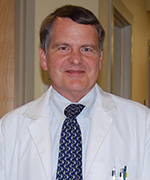 In the late 1990s and early 2000s, collaborations between neurosurgeons, neuroscientists, and psychiatrists at Brown led to advancement in the use of deep-brain stimulation (DBS) for the treatment of Parkinson’s disease and obsessive-compulsive disorder. Chair of the Department of Psychiatry Steven Rasmussen ‘74 MD’77 – who, as a student, was a member of the committee who wrote the first curriculum for the Program in Medicine – is a leading researcher studying neurosurgical approaches to treatment of OCD and understanding the neurocircuitry underlying the impact of DBS on OCD.
In the late 1990s and early 2000s, collaborations between neurosurgeons, neuroscientists, and psychiatrists at Brown led to advancement in the use of deep-brain stimulation (DBS) for the treatment of Parkinson’s disease and obsessive-compulsive disorder. Chair of the Department of Psychiatry Steven Rasmussen ‘74 MD’77 – who, as a student, was a member of the committee who wrote the first curriculum for the Program in Medicine – is a leading researcher studying neurosurgical approaches to treatment of OCD and understanding the neurocircuitry underlying the impact of DBS on OCD.
30. Leslie Gordon ScM’91 MD’91 PhD’98 and the Progeria Research Foundation
31. Myechia Minter-Jordan ’94 MD’98
 Dr. Minter-Jordan serves as the president and CEO of the CareQuest Institute for Oral Health. A physician and business executive, she served as chief medical officer and CEO of the Dimock Center, one of the largest community health centers in Massachusetts. During Myechia’s tenure, Dimock was recognized as a national model for comprehensive, integrated health and human services. In 2020, Dr. Minter-Jordan joined 18 other Black and Brown executives in Massachusetts as a founding leader of The New Commonwealth Racial Equity and Social Justice Fund to provide philanthropic support to community groups and coalitions fighting systemic racism and racial inequity.
Dr. Minter-Jordan serves as the president and CEO of the CareQuest Institute for Oral Health. A physician and business executive, she served as chief medical officer and CEO of the Dimock Center, one of the largest community health centers in Massachusetts. During Myechia’s tenure, Dimock was recognized as a national model for comprehensive, integrated health and human services. In 2020, Dr. Minter-Jordan joined 18 other Black and Brown executives in Massachusetts as a founding leader of The New Commonwealth Racial Equity and Social Justice Fund to provide philanthropic support to community groups and coalitions fighting systemic racism and racial inequity.
32. Affiliation with Lifespan Health System
 Brown signed an Academic Affiliation Agreement with Lifespan Health System in 1997. This partnership was strengthened in 2010 with amendments aimed to improve joint strategic planning, expand investment in the academic medical program, and formally recognize Rhode Island Hospital as “the principal teaching hospital” of The Warren Alpert Medical School. This critical partnership continues to this day.
Brown signed an Academic Affiliation Agreement with Lifespan Health System in 1997. This partnership was strengthened in 2010 with amendments aimed to improve joint strategic planning, expand investment in the academic medical program, and formally recognize Rhode Island Hospital as “the principal teaching hospital” of The Warren Alpert Medical School. This critical partnership continues to this day.
33. Andrea Anderson ’96 MD’00
Dr. Anderson is the associate chief of the Division of Family Medicine at George Washington University Medical Associates. Dr. Anderson is the chair of the DC Board of Medicine and has been active in DC health policy and medical regulation as well as teaching ethics, professionalism, and physician advocacy to medical students and residents. She is a member of the Board of Directors and the Ethics and Professionalism Committee of the Federation of State Medical Boards. Dr. Anderson has a long history of physician advocacy involvement. She has testified extensively both on a federal and local level on health policy matters affecting community health center patients like early childhood literacy and national workforce policy reform.
34. Rena Wing, PhD
D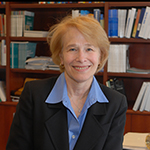 r. Wing came to Brown in 1998 as the director of the Weight Control and Diabetes Research Center at The Miriam Hospital. She was responsible for designing and implementing the lifestyle intervention in the Diabetes Prevention Program, an NIH multi-center trial that provides the strongest proof to date of health benefits of weight loss. She is chairman of Look AHEAD, a 12-year NIH clinical trial of weight loss in 5,000 adults with type 2 diabetes. Her work has informed our understanding of type 2 diabetes and its impact on cardiovascular disease.
r. Wing came to Brown in 1998 as the director of the Weight Control and Diabetes Research Center at The Miriam Hospital. She was responsible for designing and implementing the lifestyle intervention in the Diabetes Prevention Program, an NIH multi-center trial that provides the strongest proof to date of health benefits of weight loss. She is chairman of Look AHEAD, a 12-year NIH clinical trial of weight loss in 5,000 adults with type 2 diabetes. Her work has informed our understanding of type 2 diabetes and its impact on cardiovascular disease.
35. Neel Shah ’05 MD’09
 Dr. Shah is chief medical officer of Maven Clinic, the world's largest virtual clinic for women's and family health. He is also a visiting scientist at Harvard Medical School, where he previously served as a professor of obstetrics, gynecology and reproductive biology. In 2009, Dr. Shah founded Costs of Care, an NGO that curates insights from clinicians and patients to help delivery systems provide better care. In 2017, he co-founded the March for Moms, a coalition of more than 20 leading organizations, to increase public and private investment in the well-being of mothers. Dr. Shah's work to build trustworthy health care systems has earned a global profile and numerous honors, including the Franklin Delano Roosevelt Humanitarian of the Year Award from the March of Dimes.
Dr. Shah is chief medical officer of Maven Clinic, the world's largest virtual clinic for women's and family health. He is also a visiting scientist at Harvard Medical School, where he previously served as a professor of obstetrics, gynecology and reproductive biology. In 2009, Dr. Shah founded Costs of Care, an NGO that curates insights from clinicians and patients to help delivery systems provide better care. In 2017, he co-founded the March for Moms, a coalition of more than 20 leading organizations, to increase public and private investment in the well-being of mothers. Dr. Shah's work to build trustworthy health care systems has earned a global profile and numerous honors, including the Franklin Delano Roosevelt Humanitarian of the Year Award from the March of Dimes.
36. Affiliation with Care New England
 In 2012, The Warren Alpert Medical School and the Care New England Health System signed a new affiliation agreement that strengthened ties and strategic planning among the school and CNE’s Women & Infants Hospital and Butler Hospital. Through this agreement, Women & Infants Hospital is designated as “the major affiliated teaching hospital for activities unique to women and newborns,” and Butler Hospital is designated as “the major affiliated teaching hospital for psychiatry and behavioral health.” In 2019, CNE’s Kent Hospital would also affiliate with the Medical School.
In 2012, The Warren Alpert Medical School and the Care New England Health System signed a new affiliation agreement that strengthened ties and strategic planning among the school and CNE’s Women & Infants Hospital and Butler Hospital. Through this agreement, Women & Infants Hospital is designated as “the major affiliated teaching hospital for activities unique to women and newborns,” and Butler Hospital is designated as “the major affiliated teaching hospital for psychiatry and behavioral health.” In 2019, CNE’s Kent Hospital would also affiliate with the Medical School.
37. Advance-CTR
In July, the National Institute of General Medical Sciences awards $19.5 million to establish at Brown the statewide partnership Advance-CTR, which will support biomedical and public health research across Rhode Island.
Advance Clinical and Translational Research
Advance-CTR supports Rhode Island investigators through funding, research resources and services, and professional development offerings.
38. SMART Plus Clinic
In 2022, The Warren Alpert Medical School became the first school of medicine to partner with a SMART Health and Wellness Clinic. Based at the Calcutt Middle School in Central Falls, SMART Plus offers mentoring and support for students to help prepare them for careers in health care.
39. Marlene Cutitar ’83 MD’86 RES’92
Dr. Cutitar was an alum of the seven-year Program in Medical Education. She completed the general surgery residency program at Brown in 1992, where she was one of three women who served as chief surgical resident that year. Dr. Cutitar was at the vanguard of a growing cadre of women entering surgical specialties and was a staunch advocate and mentor for women in medicine throughout her career. She was also a dedicated alum of Brown, who served as president of the Brown Medical Alumni Association’s Board of Directors.
40. Adrian Gardner ’98 MD’03
 Dr. Gardner first visited Eldoret, Kenya, as a medical student in 2001 as part of the exchange program with Moi University. He continued working on AMPATH’s tuberculosis programs as he completed his training, and in 2012 he returned to Eldoret to work full time as executive field director for the AMPATH Consortium until 2020. He now serves as executive director of the AMPATH Consortium of North American academic health centers, director of the IU Center for Global Health and associate dean for global health at Indiana University School of Medicine.
Dr. Gardner first visited Eldoret, Kenya, as a medical student in 2001 as part of the exchange program with Moi University. He continued working on AMPATH’s tuberculosis programs as he completed his training, and in 2012 he returned to Eldoret to work full time as executive field director for the AMPATH Consortium until 2020. He now serves as executive director of the AMPATH Consortium of North American academic health centers, director of the IU Center for Global Health and associate dean for global health at Indiana University School of Medicine.
41. Women’s Health Initiative
Memorial Hospital in Pawtucket was one of the original clinical sites of the landmark study from 1993 to 2010. Memorial had one of the highest recruitment rates for the study, which resulted in 12,500 fewer breast cancer diagnoses per year.
42. Herb Kaplan and Warren Alpert
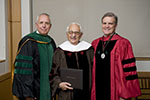 Business leader and medical philanthropist Herb Kaplan was a visionary leader who helped build the relationship between Brown and The Warren Alpert Foundation. He carried out his uncle Warren Alpert’s mission to improve human health through the support of medical education and research.
Business leader and medical philanthropist Herb Kaplan was a visionary leader who helped build the relationship between Brown and The Warren Alpert Foundation. He carried out his uncle Warren Alpert’s mission to improve human health through the support of medical education and research.
43. Opening of The Warren Alpert Medical School Building
On August 16, 2011, Rhode Island state and federal legislators, Brown University leadership, and directors from The Warren Alpert Foundation joined faculty, staff, and students for the grand opening of The Warren Alpert Medical School.



44. Brain Sciences Program
In 1999, the Brown Brain Science Program was created to advance activities in laboratory and clinical research to further understanding of the brain, from the molecular to the behavioral and cognitive levels. Department of Neuroscience Chair John Donoghue leads the program from its inception. He and five Brown colleagues will be celebrated for pioneering a nanotech brain implant that decodes brain signals to enable persons with paralysis to perform tasks – such as controlling a wheelchair, computer cursor, robotic arm – using their thoughts. Professor of Neuroscience Diane Lipscombe will become executive director in 2016 and has led the program through its transformation into the Carney Institute for Brain Science, following a $100 million gift from Robert J. Carney ’61 and Nancy D. Carney.
Carney Institute for Brain Sciences
Accelerating the pace of scientific discovery about the brain and helping to find treatments and therapies for some of the world’s most devastating diseases.
45. School of Public Health
 In 2013, the Medical School’s Program in Public Health, which grew out of the Medical School’s Department of Community Health, becomes the Brown School of Public Health. Noted gerontologist Terrie Fox Wetle, PhD, is the new school’s founding dean.
In 2013, the Medical School’s Program in Public Health, which grew out of the Medical School’s Department of Community Health, becomes the Brown School of Public Health. Noted gerontologist Terrie Fox Wetle, PhD, is the new school’s founding dean.
46. Christine Biron, PhD
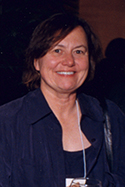 Dr. Biron was the former chair of the Department of Molecular Microbiology and Immunology. In her research, she focused on the cellular and cytokine mechanisms regulating immunity. Her lab discovered that natural killer (NK) cells, an important line of defense in fighting infection in the body, produce proteins that control infection and help modulate the body’s immune response, preventing it from doing damage. She made highly significant contributions to our understanding of immunology and is considered a pioneer for her work defining NK cells.
Dr. Biron was the former chair of the Department of Molecular Microbiology and Immunology. In her research, she focused on the cellular and cytokine mechanisms regulating immunity. Her lab discovered that natural killer (NK) cells, an important line of defense in fighting infection in the body, produce proteins that control infection and help modulate the body’s immune response, preventing it from doing damage. She made highly significant contributions to our understanding of immunology and is considered a pioneer for her work defining NK cells.
47. Center for Restorative and Regenerative Medicine
 In 2004, the Department of Veterans Affairs made a $7.2 million, five-year award to launch the center, a collaborative research effort among Brown, the Providence Veterans Administration Medical Center, and Massachusetts Institute of Technology, aimed at improving the lives of people with limb trauma, particularly war veterans. Center research focuses on tissue restoration and advanced rehabilitation, as well as on developing a new generation of biomimetic prosthetic limbs that increase mobility, comfort, and control, and reduce incidence of infection.
In 2004, the Department of Veterans Affairs made a $7.2 million, five-year award to launch the center, a collaborative research effort among Brown, the Providence Veterans Administration Medical Center, and Massachusetts Institute of Technology, aimed at improving the lives of people with limb trauma, particularly war veterans. Center research focuses on tissue restoration and advanced rehabilitation, as well as on developing a new generation of biomimetic prosthetic limbs that increase mobility, comfort, and control, and reduce incidence of infection.
48. Brown Physicians, Inc.
 On May 25, 2017, members of the Corporation of Brown University and the presidents of six faculty practice foundations join in a formal signing ceremony at Brown to create the nonprofit Brown Physicians, Inc. (BPI). The foundations are The Neurology Foundation, Inc.; University Emergency Medicine Foundation; University Medicine Foundation; University Surgical Associates, Inc.; Brown Urology, Inc.; and Brown Dermatology, Inc. BPI employs more than 500 physicians and is an effort aimed at achieving greater integration of patient care, research and education across Rhode Island’s health care sector.
On May 25, 2017, members of the Corporation of Brown University and the presidents of six faculty practice foundations join in a formal signing ceremony at Brown to create the nonprofit Brown Physicians, Inc. (BPI). The foundations are The Neurology Foundation, Inc.; University Emergency Medicine Foundation; University Medicine Foundation; University Surgical Associates, Inc.; Brown Urology, Inc.; and Brown Dermatology, Inc. BPI employs more than 500 physicians and is an effort aimed at achieving greater integration of patient care, research and education across Rhode Island’s health care sector.
49. Mary Carskadon, PhD
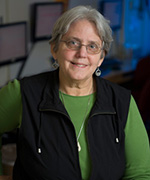 Dr. Carskadon arrived at Bradley Hospital in 1985 to start a new research group focused on examining the sleep patterns of the young. She has become on of the most prominent researchers in sleep medicine, developing the Multiple Sleep Latency Test, the standard measure of daytime sleepiness; extending sleep science to include the study of children and adolescents, thereby expanding understanding of how sleep changes across development, and the important role of sleep in learning and memory; and tirelessly advocating for sleep health in children and adolescents, including starting a national movement to change school start times.
Dr. Carskadon arrived at Bradley Hospital in 1985 to start a new research group focused on examining the sleep patterns of the young. She has become on of the most prominent researchers in sleep medicine, developing the Multiple Sleep Latency Test, the standard measure of daytime sleepiness; extending sleep science to include the study of children and adolescents, thereby expanding understanding of how sleep changes across development, and the important role of sleep in learning and memory; and tirelessly advocating for sleep health in children and adolescents, including starting a national movement to change school start times.
50. Visionary Leadership
Chancellor Sam Mencoff, President Christina H. Paxson, and Provost Richard Locke
.jpg) The leadership and vision of Chancellor Mencoff, Brown President Christina H. Paxson, and Provost Richard Locke during their tenures have had a transformational impact on The Warren Alpert Medical School.
The leadership and vision of Chancellor Mencoff, Brown President Christina H. Paxson, and Provost Richard Locke during their tenures have had a transformational impact on The Warren Alpert Medical School.
